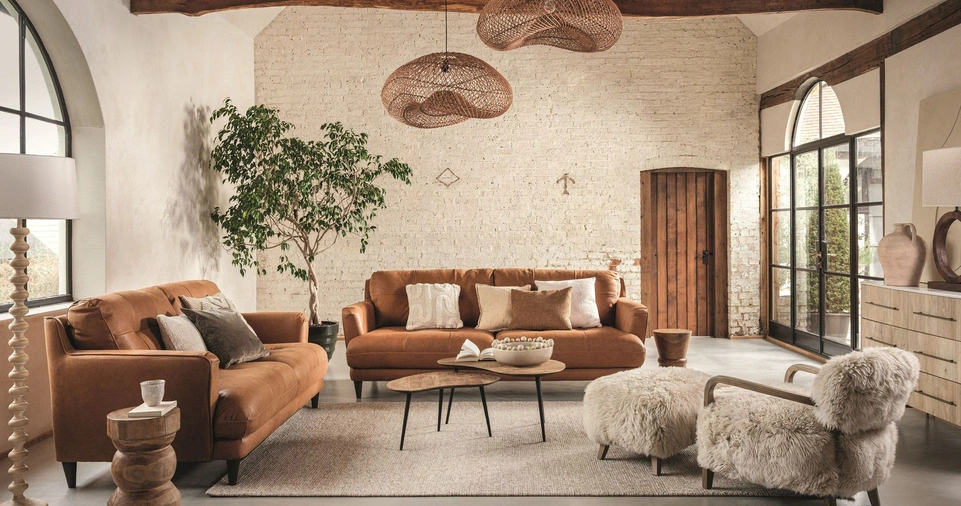Mixing patterns in interior design can transform a space, making it feel dynamic, stylish, and well-curated.
However, achieving the perfect balance requires a thoughtful approach. If done correctly, combining different patterns can add depth, personality, and warmth to a room.
While pattern mixing might seem intimidating, the right strategies can help you create an effortlessly stylish and inviting space.
Here are some essential tips to master the art of mixing patterns for a chic interior.
Tips for a Chic Interior

Stick to a Cohesive Color Palette
The key to successful pattern mixing is maintaining a cohesive color scheme. Choose a primary color and complementary hues to create harmony among different patterns.
When colors relate to each other, the space feels intentional rather than chaotic. If you prefer a bold look, consider using contrasting colors strategically.
However, a monochromatic or analogous color scheme often makes mixing patterns feel more refined and balanced.
Vary the Scale of Patterns
Using patterns of different sizes prevents them from competing for attention. A good rule of thumb is to mix large-scale patterns with medium and small-scale designs.
For instance, pair a bold floral print with a subtle geometric pattern to create balance.
Large-scale designs make a statement and are best suited for accent walls, large furniture, or area rugs, while smaller-scale patterns can be used for accessories like cushions and throws.
Use a Common Theme
Patterns that share a common theme, such as nature-inspired prints, geometric shapes, or vintage motifs, will work well together.
This thematic connection ensures that the patterns complement rather than clash with each other.
For example, if you’re drawn to floral motifs, you can pair botanical prints with subtle leaf patterns or abstract floral designs.
A theme helps tie everything together, preventing a mismatched look.
Blend Different Pattern Types
Incorporate a mix of different pattern styles—such as florals, stripes, polka dots, and abstract prints—to create visual interest.
The contrast between organic and structured designs can add sophistication to your space. Stripes and checks provide structure, while florals and abstract patterns soften the look.
Aim to create a balanced composition that keeps the eye moving across the room without overwhelming the senses.
Distribute Patterns Evenly
Avoid clustering patterns in one area of the room. Spread them throughout the space—on upholstery, pillows, curtains, and rugs—to maintain balance and cohesiveness.
Consider layering patterns strategically, placing them in various zones of the room to create an interconnected look.
When distributing patterns, ensure that each pattern has a role within the overall design rather than appearing as an isolated element.
Incorporate Solid Colors
To prevent the design from feeling overwhelming, introduce solid-colored elements.
Neutral backgrounds or monochromatic furnishings can serve as a grounding force, allowing patterns to shine without overpowering the room.
Use solid colors on larger surfaces such as walls, sofas, or bedding to provide a visual break and create a sense of calm amidst the patterns.
This approach helps to balance bold designs and prevent visual clutter.
Experiment with Textures
Adding textured fabrics and materials can enhance the depth of your pattern mix. Consider incorporating woven textiles, velvet, or linen to give the space a layered and tactile feel.
Textures add another dimension to your design, preventing it from feeling too flat.
A patterned velvet cushion, a woolen throw, or a linen-upholstered chair can subtly introduce pattern and texture at the same time, enriching the overall aesthetic.
Start Small
If you’re hesitant about mixing patterns, start with smaller elements like throw pillows, blankets, or artwork.
Once you become comfortable, you can incorporate patterned wallpapers, rugs, or furniture.
Layering smaller patterns in a controlled manner allows you to experiment without committing to a dramatic change.
Over time, as you grow more confident, you can introduce bolder and larger patterns to create a striking yet cohesive look.
Trust Your Instincts
Ultimately, interior design is a personal expression. While guidelines can help, trusting your instincts and choosing patterns that resonate with you will make your space truly unique.
If a combination of patterns makes you happy and feels right in your home, go for it! The best-designed spaces often come from a blend of creativity, intuition, and experimentation.
Layer Patterns for Depth
Layering patterns is an advanced technique that can elevate your space.
Instead of using just two or three patterns, try layering multiple patterns within different elements—such as rugs, curtains, upholstery, and decorative accessories.
Start with a foundation pattern (e.g., a large rug), then add complementary patterns in different scales and styles.
This creates a layered, dynamic effect that adds richness and sophistication to the room.
Consider Pattern Placement
Pattern placement is crucial to achieving a visually appealing result. Large, bold patterns work best on statement pieces, while smaller patterns can be used for accents.
When mixing patterns on furniture, ensure they are spread across different areas of the room.
For example, if you have a patterned sofa, balance it with solid-colored armchairs and patterned throw pillows to maintain visual harmony.
ALSO READ:
Final Thoughts
Mixing patterns is an exciting way to showcase your style and creativity. By following these tips, you can create a chic, well-balanced interior that feels curated and inviting.
Thoughtfully blending different patterns, textures, and colors can turn an ordinary space into an extraordinary one.
So, don’t be afraid to experiment—embrace the beauty of patterns and watch your space come to life with personality and charm!






